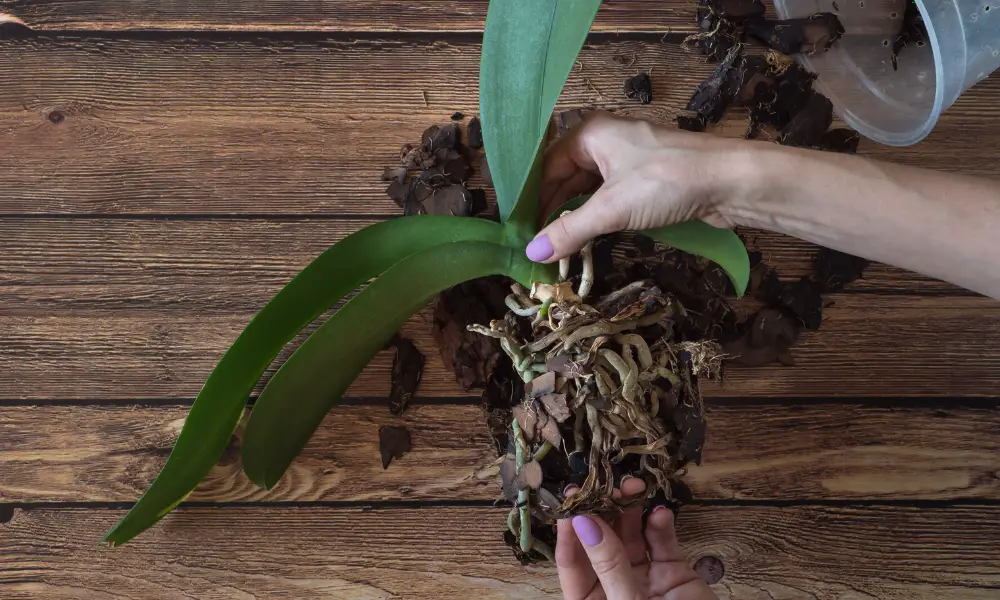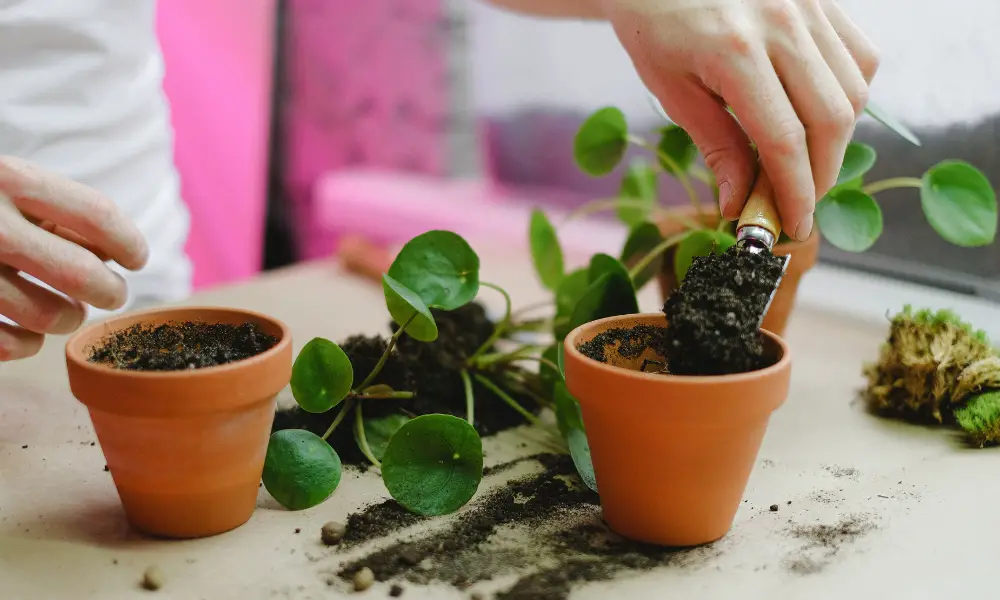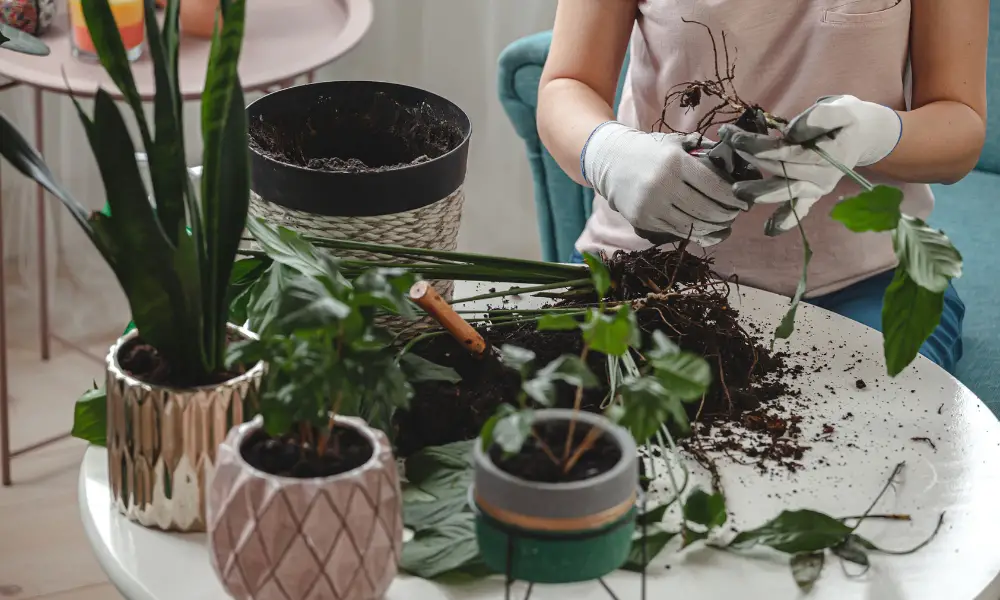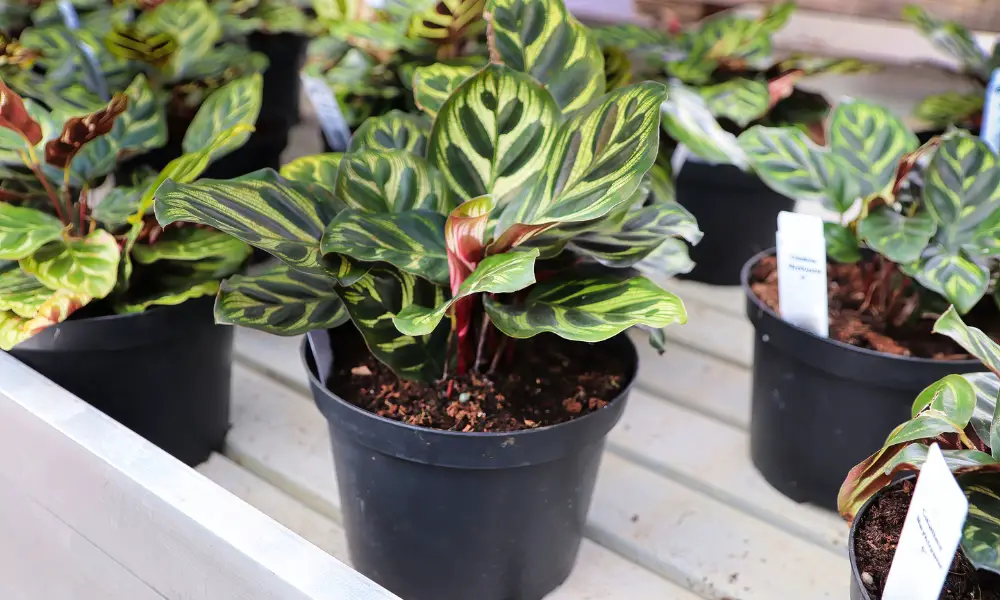Repotting is an indispensable aspect of plant care, crucial for promoting robust growth and maintaining overall plant health. In fact, repotting can increase the available soil volume by up to 50%, providing the plant with essential nutrients and more space for its root system to develop.
However, repotting can be a double-edged sword, as the process can inadvertently damage the delicate roots, which are responsible for the plant’s nutrient absorption, water uptake, and anchorage. Root damage during repotting can lead to stunted growth, increased susceptibility to diseases and pests, and even plant death. Therefore, it is of paramount importance to minimize root damage during repotting to ensure the continued health and vitality of your plants.
In this comprehensive guide, we will explore various techniques and best practices to help you achieve this goal, safeguarding your plants’ well-being throughout the entire repotting process.
Why is Minimizing Root Damage During Repotting Essential for Plant Health?

Roots play a central role in a plant’s life, responsible for nutrient absorption, water uptake, and anchorage. Damaging roots during repotting can hinder the plant’s ability to grow and lead to various health issues.
The Central Role of Roots
A plant’s roots are its lifeline. They absorb essential nutrients and water from the soil, allowing the plant to grow and thrive. Furthermore, roots anchor the plant in the ground, providing stability and support.
Effects of Root Damage on Plant Growth
When roots are damaged during repotting, they can struggle to absorb the necessary nutrients and water. This can lead to stunted growth, stress response, and overall decline in plant health. Additionally, damaged roots may become more susceptible to diseases and pests, further compromising the plant’s well-being.
Now that we understand the importance of minimizing root damage during repotting, let’s explore some practical tips on how to do this effectively.
Safely Removing the Plant From Its Current Pot

One of the crucial steps in repotting is removing the plant from its existing pot without causing damage to the roots. To do this effectively, you must first loosen the root ball and then carefully dislodge the plant.
Techniques for Loosening the Root Ball
Gently tapping the sides of the pot can help loosen the soil and roots, making it easier to remove the plant without causing damage. Another technique is to use a blunt object, such as a wooden dowel, to gently push around the edges of the pot, separating the root ball from the pot’s sides.
Strategies for Dislodging Stubborn Plants
For stubborn plants that refuse to budge, try turning the pot upside down while holding the plant’s base, and gently tapping the bottom of the pot. If necessary, use a flexible plastic spatula to carefully slide between the pot and root ball to further loosen the plant.
Handling Delicate Plants and Sensitive Root Systems
When dealing with plants that have delicate or sensitive root systems, be extra cautious during the removal process. It’s essential to avoid excessive pulling or tugging, which can cause root damage. Instead, support the plant’s base and gently work it free from the pot.
Properly Untangling and Trimming Roots During Repotting

Once the plant is removed from its pot, it’s time to examine the roots and untangle or trim them if necessary. This is crucial to minimize damage during the repotting process.
Techniques for Gently Teasing Apart Roots
To untangle roots without causing damage, use your fingers to gently work through the root ball, separating any roots that may be entwined. In cases where roots are more densely packed, a chopstick or fork can be used to carefully tease them apart.
Identifying and Removing Damaged, Diseased, or Dead Roots
Inspect the roots for any signs of damage, disease, or decay. Damaged roots may appear broken, discolored, or mushy. It’s essential to remove these unhealthy roots to prevent the spread of disease and promote healthy growth.
Appropriate Tools and Methods for Trimming Roots
When trimming roots, use clean, sharp scissors or pruning shears to make clean cuts. Avoid tearing or crushing the roots, as this can lead to infection and further damage. Be cautious not to over-trim the roots, as this may impact the plant’s ability to absorb nutrients and water.
Positioning the Plant in the New Pot to Minimize Root Stress

Once the roots have been examined and tended to, it’s time to place the plant in its new pot. Proper positioning is crucial to minimize root stress and ensure a smooth transition.
Ensuring Proper Depth and Placement
Place the plant in the new pot, ensuring it is at the same depth as it was in the previous pot. This is important, as planting too deep or too shallow can cause stress to the roots and negatively impact the plant’s growth.
Techniques for Spreading Roots Evenly
When placing the plant in the new pot, gently spread the roots outward to promote healthy growth and prevent overcrowding. This will allow the roots to grow freely and help the plant establish itself more quickly in the new environment.
The Role of Soil Compaction in Root Stability and Damage Prevention
While it’s important to firm the soil around the plant’s roots, avoid compacting the soil too tightly. Overly compacted soil can restrict root growth, limit oxygen availability, and increase the risk of root damage.
When to Repot Your Plant
Knowing when to repot your plant is essential to ensure a successful transition and prevent unnecessary root damage. Here are some factors to consider when determining the best time to repot.
Signs of Root-Bound Plants
Plants that are root-bound may exhibit slowed growth, nutrient deficiencies, or overcrowded roots. If you notice any of these signs, it may be time to repot.
Optimal Times for Repotting
Certain plant species and seasons are more conducive to successful repotting. Consult species-specific guidelines and consider repotting during the plant’s dormant or less active growth periods.
Pot Size and Plant Age
As plants grow, they may require larger pots to accommodate their expanding root systems. Keep in mind the specific needs of your plant and its age when determining when to repot.
Best Practices for Preparing Your Plant for Repotting

Proper preparation can make the repotting process smoother and minimize the risk of root damage. Here are some best practices to follow.
Watering the Plant Before Repotting
Ensure your plant is well-watered before repotting, as this can make it easier to remove the plant from its current pot and minimize root damage.
Choosing the Right Pot Size and Type
Select a pot that is appropriately sized for your plant, allowing for some room to grow. Consider the material, drainage, and other factors specific to your plant’s needs.
Selecting the Most Suitable Soil Mix
Choose a soil mix that provides the necessary nutrients and drainage for your plant species. This will help promote healthy root growth and prevent damage during repotting.
Helping Your Plant Recover After Repotting
After repotting, it’s important to support your plant’s recovery and monitor for signs of stress or root damage.
Providing the Right Balance of Water, Light, and Nutrients
Ensure your plant receives the appropriate amounts of water, light, and nutrients during the recovery period. This will help the roots heal and reestablish themselves in the new pot.
Monitoring for Signs of Stress or Root Damage
Keep an eye on your plant for any indications of stress, shock, or root damage symptoms. Address any issues promptly to promote a healthy recovery.
Specific Repotting Considerations for Certain Plant Species or Root Types
While the general principles of repotting apply to most plants, some species have unique characteristics or root systems that require special attention during repotting. In this section, we’ll delve deeper into these considerations, providing practical tips and examples to help you successfully repot various plant types.
Unique Repotting Needs
Different root structures demand tailored repotting techniques to minimize damage and promote healthy growth:
- Taproots: Plants like carrots, dandelions, or certain trees have taproots, a single, large root that grows vertically downward. When repotting plants with taproots, avoid damaging the main root by gently loosening the soil around it and providing ample space in the new pot for the taproot to grow. In some cases, using a deeper pot may be necessary to accommodate the taproot’s growth.
- Fibrous Roots: Grasses, ferns, and many houseplants have fibrous root systems, consisting of numerous, thin roots that spread out in all directions. These plants generally benefit from regular repotting to prevent root-bound conditions. When repotting, take extra care to untangle the roots gently and provide a well-draining soil mix to promote healthy root development.
- Specialized Root Structures: Some plants have unique root structures, like orchids with their aerial roots or carnivorous plants with modified roots for trapping insects. Research the specific requirements for these plants and adapt your repotting techniques accordingly. For example, when repotting orchids, use a loose, well-draining orchid mix and ensure the aerial roots are not buried in the soil. For carnivorous plants, use a soil mix that mimics their natural environment, such as a combination of sphagnum moss and perlite.
Repotting Succulents, Cacti, and Plants with Sensitive Root Systems
Succulents, cacti, and other plants with sensitive root systems demand extra care during repotting:
- Succulents and Cacti: These plants often have shallow, delicate root systems that can be easily damaged. When repotting, allow the plants to dry out for a day or two before the process to reduce the risk of root damage. Use a well-draining soil mix, such as a combination of potting soil and coarse sand or perlite, and avoid overwatering during the recovery period. Be cautious of the plant’s spines when handling cacti and wear gloves for protection.
- Sensitive Root Systems: Some plants, like African violets or peace lilies, have delicate root systems that can be easily damaged during repotting. Handle these plants gently and avoid overhandling the roots. When untangling the roots, use your fingers or a soft tool, like a paintbrush, to minimize the risk of damage.
Managing Aggressive Root Growth or Invasive Tendencies
Plants with aggressive root growth or invasive tendencies can pose challenges during repotting:
- Aggressive Root Growth: Bamboo, mint, or certain invasive species can exhibit rapid root growth, making repotting more difficult. In these cases, consider using root barriers or planting the species in a separate pot within a larger container to help contain the roots and prevent them from taking over the entire pot.
- Invasive Species: Some plants, like English ivy or Japanese knotweed, are known for their invasive nature, which can make repotting more challenging. When repotting invasive plants, use caution to prevent their spread to other areas of your garden. Regularly trim the roots and monitor the plant’s growth to keep it under control. You may also consider planting these species in containers rather than directly in the ground to limit their expansion.
Considering Research and Studies in Repotting Techniques
Recent research and studies have shed light on various aspects of repotting and root management. Incorporating these findings into your repotting practices can further minimize root damage and promote plant health.
- Root Pruning: A study published in the Journal of the American Society for Horticultural Science found that root pruning can help promote healthier, more compact root systems in container-grown plants. When repotting, consider pruning overly long or damaged roots to encourage new, healthy root growth.
- Biostimulants: Research published in the journal Frontiers in Plant Science suggests that the use of biostimulants, such as seaweed extracts or beneficial bacteria, can help enhance root growth and alleviate transplant shock. You may consider incorporating biostimulants into your repotting process to promote healthier root systems and improve plant resilience.
- Mycorrhizal Fungi: The application of mycorrhizal fungi during repotting has been shown to improve root growth and overall plant health, according to a study in the journal Mycorrhiza. Consider using a mycorrhizal inoculant when repotting, particularly for plants that form symbiotic relationships with these fungi, such as most trees, shrubs, and many herbaceous plants.
